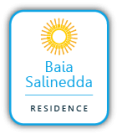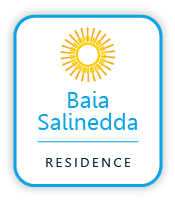Located in the northeastern part of Sardinia, in the Gallura subregion, the municipality of San Teodoro is part of Sassari Province, and lies at the foot of Mount Nieddu. It faces the Tyrrhenian Sea, a few minutes from Olbia’s harbour and airport: whether by land or sea or air, San Teodoro is easily reached from all the main European capitals.
History
The name of the town derives from its church, dedicated to San Teodoro of Amasea, Roman soldier and martyr of the fourth century AD. Although the first clearly documented traces of the church date back to the seventeenth century, the territory had been inhabited since the Neolithic Age, as finds of prehistoric remains prove: the most relevant is a nuraghe in Naracheddu suburb, of which only a few rows of stones are preserved.
Archaeological finds, on display in the local museum, strengthen the hypothesis of the existence of a Roman settlement, called Coclearia, in San Teodoro.
The history of the territory throughout the medieval period is almost unknown. Some certified documentation on the life in the area dates back to the thirteenth century AD. The territory was then known as Offolle and had become a property of the mainland city of Pisa in the final phase of its history. The latest news about Offolle date back to 1348. Later, probably because of the serious plague which struck Europe, and even Sardinia and Gallura, this community got lost. Travellers and geographers of the fifteenth-sixteenth century describe the territory of San Teodoro and the coastal areas of Gallura as forested and semi-deserted lands visited by shepherds.
Traces of a stable community date back to the sixteenth-seventeenth century, when the area seems to have been populated by people from high Gallura and the south of Corsica, who established themselves in the thick of the untouched woods. San Teodoro d’Ovidde is the name with which this strip of Gallura, congregated around a country church, has been known since about 1700.
The civilization of the Gallurian sheep pens was born, and survived the course of history until the 1950’s. In the 1960’s, a great impulse toward renovation was dragged by the investments of Prince Aga Khan in Costa Smeralda; since then, San Teodoro has undergone an extraordinary urbanistic re-organisation, which has made the centre one of the most popular tourist destinations on the island of Sardinia.
Today the city has a population of about 4,900 inhabitants and its economy is based mostly on the tourism industry, although also agriculture, farming and the food processing industry are relevant. The Gallurian community today continues celebrating its history with rural and religious festivals.
In San Teodoro, the most important celebration is the festival of the patron saint, taking place during the third week of June; two other similar festivals occur in other parts of the region: the festival of Sant’Andrea in the community of Montipitrosu (to the north), celebrated during the first week of June, and the festival of Sant’Antonio of Padua, in the community of Straula (to the south) during the second week of June. On the 16th and 17th of January, a celebration dedicated to Sant’Antonio Abate is called Lu Fuculoni, which means “the great fire”.
The city centre
San Teodoro is developed around its church, rebuilt in the ‘50s and located in Gallura Square. Until the early ‘70s, the square was also called “Piazza Montecitorio”, because its market has always hosted a spontaneous form of assembly of citizens (metaphorically, the deputies of Rome’s Montecitorio Square), discussing and commenting on politics and various issues.
The village is characterized by the typical architecture of Costa Smeralda, with low houses in granite and trachyte. Throughout the village, there are a number of modern style squares and green areas. Downtown, the famous fish painted on a large wall fresco were created, about thirty years ago, by the artist Luigi Castiglioni, a well-known illustrator and painter of the avant-garde in Europe and the United States. His mural was inspired by the bright colours of the coast. During summer evenings, the centre is closed to traffic, becoming an entirely pedestrian area. Open until late at night are pubs, restaurants, sushi bars, wine bars, ice cream shops and nightclubs, but also the tourist information office, many shops, hairdressers and the summer evening craft market.
The Sea Museum
In San Teodoro, in the area of Niuloni, there’s a small but important archeological museum. The exhibited findings mostly come from the seabed of the coast of San Teodoro, sometimes just a few meters deep, or were donated by citizens. Precious objects like Tremissis Aureus of the golden age of Byzantine art, the fragment of a Roman helmet and amphorae contribute to the reconstruction of the community’s history, proving maritime traffic along the coast in Pre-historic, Phoenician, Punic, Roman, Medieval and Post-medieval times. The museum also houses a large library and a small naturalistic section with a beautiful collection of shells from all the oceans of the world, with information panels.
Mount Nieddu
Overlooking the plain of San Teodoro and part of the coast of Gallura, Mount Nieddu is worth a visit because of the breathtaking view and the beauty of its landscape, characterized by waterfalls and natural pools, forests of oaks and cork trees, granite pinnacles shaped by the mistral wind and rich flora and fauna. Its highest peak, Punta Magghjóri, rises to 3,182 feet above sea level. The granite massif of Mount Nieddu is protected by the Sardinia Regional Law, establishing the areas of special natural and environmental significance.
The lagoon
Extended for almost 240 ha behind the beach La Cinta and divided from the seaside by dunes, the lagoon of San Teodoro is a precious ecosystem, home to a large biological heritage of flora and fauna. Depth of water goes from 70 to 120 cm.
Surrounded by Mediterranean scrub, the lagoon is immersed in lush vegetation, composed of lentisks, myrtles, rosemary, rushes and junipers.
A wooden fence indicates the paths prepared for the observation of endemic species, like gold mullet, sea bass, sea bream, saddled bream, kingfisher, heron, red heron, coot, cormorant, marsh harrier, kestrel. It is not unusual to see pink flamingos looking for small crustaceans. The fence also marks the areas restricted by specific redevelopment projects.
In the pond, oyster farming and harvesting of clams are practiced.
For further information: www.santeodoroturismo.it

